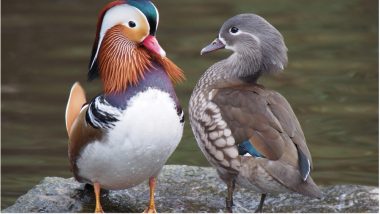A study conducted shows that ‘bigger’ is not always ‘better’ especially in the animal kingdom. For most animals, survival is all about being good at getting laid. That’s why sexual dimorphism exists, a condition where the two sexes of the same species exhibit different characteristics beyond the differences in their sexual organs. According to a study released recently, one highly coveted aspect of sexual dimorphism is sometimes a cock block to survival – a very large genitalia. The study, authored by scientists at the Smithsonian’s National Museum of Natural History, shows that the size and shape of at least one species’ genitals has spelled out disaster for longevity.
Their analysis of the fossils of ostracods – tiny, shrimp-like crustaceans that are still around today – indicated that individuals with larger and more elongated sex organs had estimated extinction rates that were ten times higher than those of the same species with the lowest investment. ‘Investment’ here refers to genitalia – the amount of energy any species invests into growing bigger sex organs. The idea in this paper is that the energy that older ancestors of ostracods spent on having large sex organs left them unable to develop traits that would have left them better equipped for survival, albeit with smaller genitals.
Paleobiologist and co-author of the study said, “We showed that when males are larger and more elongated than the females, those species tend to not last as long in the fossil record. They have a higher risk of extinction.” Hunt and his team studied 6,000 ostracod specimens. Assessing the shapes and sizes of the specimens, they took note of the geological layer in which they were collected. This specimen collection included 93 species of ostracods that lived 65 to 85 million years ago. While specimens of some species indicated that they lived throughout the 20-million-year span, other species had only existed for a few thousand years. The difference between survival and annihilation was the size and shape of the male’s genitalia
While larger organs presumably could produce more sperm, hypothetically increasing the creature’s opportunity for reproductive success, it appears that they lacked adaptations necessary to cope with environmental threats. Male ostracods that are alive today are no longer hindered by penis size. Now, in a sexual dimorphism twist, they have two penises. It appears that to survive, animals need to strike a balance between getting busy and revving up all other things you need to do to live.
(The above story first appeared on LatestLY on Apr 18, 2018 09:19 PM IST. For more news and updates on politics, world, sports, entertainment and lifestyle, log on to our website latestly.com).













 Quickly
Quickly




















